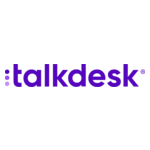CHIME global research reveals inconsistent, disjointed patient experiences remain chronic pain point for healthcare providers
- A majority of survey respondents cite inconsistent patient experiences across interaction points (63%) and disjointed patient experiences (58%) as significant or extreme challenges for their organization
- Integrating patient capabilities is a high priority for 55%; however, fragmented ownership of engagement capabilities and limitations of legacy IT infrastructure represent obstacles to combining these functions onto a single platform
- A cloud-based, integration-first platform that supports a range of channels and functional areas offers a remedy to long, costly custom integration projects and paves the way for more unified, seamless patient journeys
SAN FRANCISCO–(BUSINESS WIRE)–#contactcenter–Talkdesk®, Inc., a global cloud contact center leader for customer-obsessed companies, in collaboration with the College of Healthcare Information Management Executives (CHIME), today released a new research report, The Future of Patient Experience: Unifying Interactions in Healthcare. The report examines the causes and far-reaching consequences of disconnected patient experiences and sheds light on the barriers to technology consolidation.

Healthcare providers have made significant investments in recent years to better orient care around patients. Along with those efforts, many have adopted digital technologies, resulting in unintended negative consequences. While delivering greater access to channels and automation, the technology often takes the form of disparate point solutions, creating siloed data and fragmented patient interactions. In fact, 71% of survey respondents say their organizations have limited to no integration of patient engagement capabilities.
Fragmentation in patient interactions is a widespread problem for healthcare providers and can lead to critical information gaps, failure to effectively address patient issues, and even worsened patient outcomes. It can also cause friction for patients as well as patient services staff, and drive burnout and attrition for the latter. Survey respondents cite inconsistent (63%) and disjointed (58%) patient experiences among their most pressing challenges. As patients have more choices for their healthcare interactions and consumer expectations for great service become higher, it is essential provider organizations use technology that transform patient engagement capabilities.
“Consistently high-quality experiences before, between, and after clinical encounters are critical to the health and well-being of patients, but more progress is needed in the healthcare sector’s evolution to a journey that is truly patient-centric, transparent, and accessible,” said Lorren Pettit, vice president, CHIME Digital Health Analytics. “Unifying the disparate components of patient interactions to deliver experiences that are straightforward and easy to navigate is a clear opportunity for bringing that vision to life.”
In pursuit of this vision, more than half (55%) of those surveyed consider integration of their patient engagement capabilities a high priority for the coming year. A sizable number (84%), however, do not think this can easily be accomplished at their organization via any existing platform. They view de-centralized ownership of related capabilities and inflexibility of existing technology architecture as the most significant barriers such an approach would need to overcome.
“The internal barriers faced by healthcare leaders aren’t surprising given the high cost, time, and organizational will it takes to consolidate patient engagement point solutions,” said Patty Hayward, vice president of healthcare and life sciences strategy, Talkdesk. “A cloud-based, integration-first platform that supports a range of channels and functional areas offers an alternative to custom integration projects and paves the way to more unified, seamless patient journeys.”
To read more of the research findings, download the report, The Future of Patient Experience: Unifying Interactions in Healthcare.
Methodology
The report was based on a quantitative online survey conducted in collaboration with CHIME Digital Health Analytics, a global market intelligence and survey research hub. The survey was fielded in July 2022 to senior leaders in healthcare. Findings are based on 115 global interviews with executives from healthcare systems, hospitals, ambulatory facilities/physicians offices, and nursing facilities. Leaders primarily represented IT functions, but also patient experience, clinical experience, and operations.
Additional Resources:
- See Talkdesk as a Leader by Gartner in the 2022 Magic Quadrant for Contact Center as a Service (CCaaS) and other recent awards and recognition
- Learn more about the Talkdesk Healthcare Experience CloudTM and take a video tour
- Access previous research from Talkdesk on the patient experience revolution in healthcare
Social Networks:
- Talkdesk Community: https://www.talkdesk.com/customer-community
- Blog: https://www.talkdesk.com/blog/
- Twitter: https://twitter.com/Talkdesk
- LinkedIn: https://www.linkedin.com/company/talkdesk/
- Facebook: https://www.facebook.com/Talkdesk/
- Instagram: https://www.instagram.com/Talkdesk/
About Talkdesk
Talkdesk® is a global cloud contact center leader for customer-obsessed companies. Our automation-first customer experience solutions optimize our customers’ most critical customer service processes. Our speed of innovation, vertical expertise, and global footprint reflect our commitment to ensuring that businesses can deliver better experiences across any industry and through any channel, resulting in higher customer satisfaction and accelerated business outcomes.
Talkdesk is a registered trademark of Talkdesk, Inc. All product and company names are trademarks™ or registered® trademarks of their respective holders. Use of them does not imply any affiliation with or endorsement by them.
Contacts
Camille Beasley
camille.beasley@talkdesk.com
(972) 896-1936




